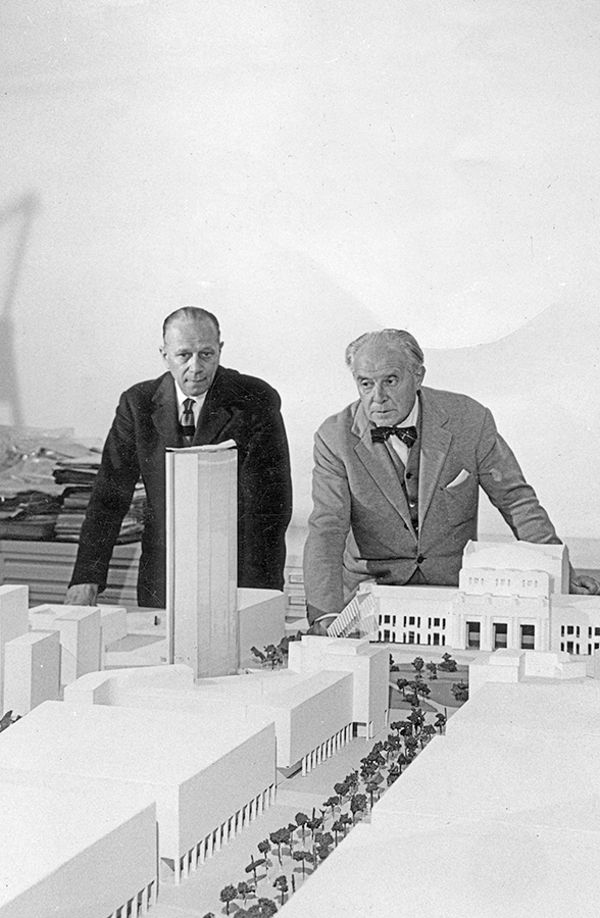Gio Ponti and Antonio Fornaroli in front of a model for the Pirelli Tower prior to its construction, circa 1953. © Gio Ponti Archives.
—By Brian Kish, Curator and Specialist in 20th Century Italian Architecture and Design, Consultant to the Gio Ponti Archives since 2006.
Like a tapestry woven over a lifetime mostly on Gio Ponti’s loom, the art and design objects from Antonio Fornaroli’s home shine a multicolored light on the world of mid-century Milanese interiors. Far reaching interlocked threads lead us, among countless objects from vases to buildings, towards a host of participants in the close-knit Ponti community. We encounter almost everyone: Paolo Buffa, Carlo De Carli, Adriano Spilimbergo, Piero Zuffi, Pietro Chiesa, Paolo De Poli, Fausto Melotti, Lucio Fontana, Max Ingrand, both Carlo and Tobia Scarpa, Fulvio Bianconi, Thomas Stearns, and Tapio Wirkkala, all of whom had project-related associations or even direct connections to Ponti such as Buffa and De Carli who had worked early on in the Ponti studio.
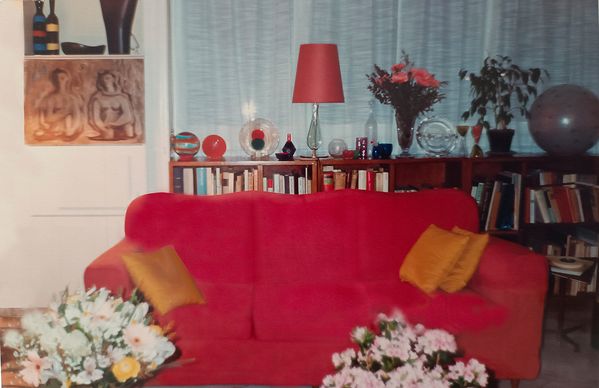
Casa Fornaroli interior.
In his own 1954 monograph Espressione di Gio Ponti, the master enthusiastically referred to his collaborator Fornaroli as, “my dearest and truest friend.” Their privileged professional relationship and friendship explains why hitherto unknown Ponti designs in this selection from Casa Fornaroli are only now re-emerging, further illuminating what was probably the most active and prolific 20th century architecture practice in Italy.
If Giordano Chiesa was Ponti’s most trusted ‘ebanista,’ then surely Fornaroli was his most trusted engineer.
—Brian Kish
Their collaborations, starting in 1933 went on for almost 40 years, producing the firm’s most noteworthy buildings. In Milan alone, 23 buildings are attributed to their partnership. The standard bearers were the two Montecatini buildings (1936 and 1951), the Pirelli tower (1956), and the bright green tile clad Montedoria building (1970), illustrating one — the corporate — amongst a plethora of construction typologies that include apartments, churches, a factory, a hospital, and a school.
A few years into their partnership, Fornaroli began to acquire interior furniture by Ponti. From the late 1930s until the mid-1950s his residence steadily filled up with many significant pieces. It transpires that Fornaroli, the engineer, was drawn to Ponti’s rectilinear designs rather than his angled tapering furniture components. There is much breathing space in their calm structured geometries, a stark contrast to the agitated excursions seen in Casa di Fantasia of 1951. The Fornaroli pieces in this selection exemplify modernist rigor. The set comprises a four-door wardrobe and a wall-mounted chest of drawers. These significant wooden designs are lightened, even sublimated through their crafted, white-painted grissinato surfacing. The wardrobe also stands out for incorporating a series of 12 paintings by Adriano Spilimbergo. It likely is the first recorded work of a Ponti collaboration with Spilimbergo, an artist who ten years later was associated with painted images he made for Osvaldo Borsani. Around that time, both in Domus and Stile, Ponti published glowing reviews on Spilimbergo’s art exhibitions; so it was not by chance that he sought out an experimental collaboration with this artist. It was also the first of a long list of collaborations with Piero Fornasetti, Edina Altara, Piero Zuffi, Paolo De Poli, and others.

(Left) Gio Ponti and Adriano Spilimbergo, Unique illuminated wardrobe with twelve integrated paintings, ca. 1939. (Right) Gio Ponti, Rare wall-mounted chest of drawers, ca. 1939. Casa Fornaroli London.
Three other furniture designs with integrated art works were distributed throughout Fornaroli’s apartment. A 1951 Piero Zuffi lithographic print was incorporated into a large bookcase that surmounts a bank of concealed cabinetry. Ponti’s 1955 bookcase with its multiple array of varying geometries, is offset by Zuffi’s animated abstract still life over one flap-door cabinet facing. Earlier in 1948 Ponti himself had created an integrated bar cabinet surmounted by one of his double shrouded female forms, their archaic style in startling contrast to the white painted rationalist cabinetry below. Completing these wanderings into art and design, the largest and most complex part of the collection is a wall that functions as wardrobe system with a concealed central door opening into an adjoining room. The entire facade is a vast mural that replicates the “diamond as crystal as architecture” theme that Ponti had also used in both the Caracas villas, Planchart, and Arreaza. Likewise, this entire wall unit is another powerful, clear statement of Ponti’s guiding humanist thesis in compelling diamond imagery.
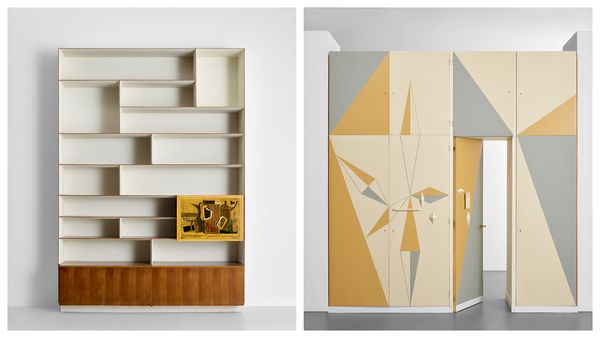
(Left) Gio Ponti and Piero Zuffi, Unique bookcase with cabinets and integrated lithograph, ca. 1955 and 1951. (Right) Gio Ponti, Unique large wardrobe with integrated door, ca. 1955. Casa Fornaroli London.
Most definitely, Fornaroli had a predilection for integrated Pontian cabinetry which was abundantly distributed throughout his flat. The living room incorporated more of Ponti's “furnished walls,” an ideal backdrop for a hybrid study/dining table with a gracious slim line crowned by a quasi-hexagonal top recalling the footprint of the Pirelli tower that Fornaroli and Ponti were working on at that time. On a miniature scale, the cabinetry extends to a toy furniture bedroom suite, featuring a wardrobe and a furnished bed all covered in Ponti’s “I Fantini” pattern which he has used for Ginori ceramics in the 30s.

Gio Ponti, ‘I fantini’ toy furniture, 1950s. Casa Fornaroli London.
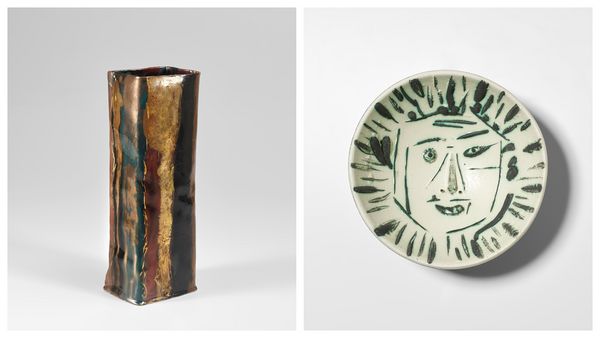
(Left) Fausto Melotti, Important vase, ca. 1950. (Right) Pablo Picasso, ‘Visage de face’, 1960. Casa Fornaroli London.
A collection of artworks and objects completes this lightsome environment: ceramics by Picasso, Melotti, and Fontana found company with Ponti designed glassware, silverware, and enameled works. His Morandiane bottle series for Venini was continued by Fulvio Bianconi, and his designs for enameled copper bowls and vases executed in collaboration with Paolo De Poli eventually became the defining achievement of almost all of De Poli’s oeuvre. Also significant among these objects are a pair of 1956 prototype vases for Christofle. These silver-plated and brass-plated bundled clusters of varying size tubes are the forerunners of Ponti's 1960s projects for colored skyscrapers, and strongly recall the matrix for his 1971 Centre Pompidou project.
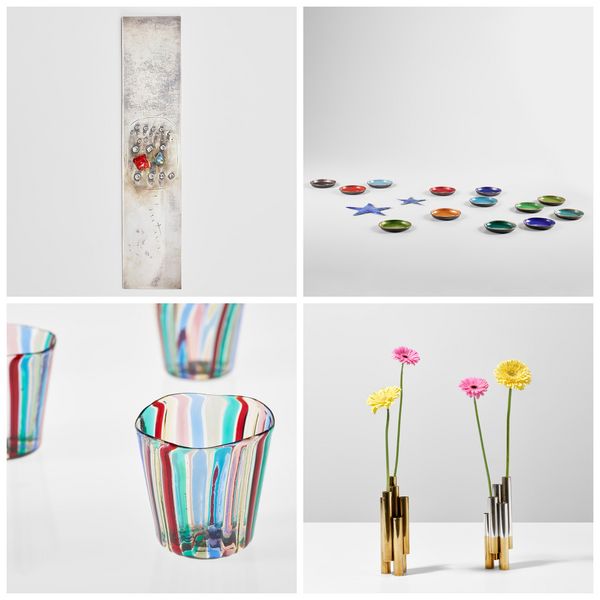
(Clockwise from Top Left) Lucio Fontana, ‘Concetto spaziale’, ca. 1963. Paolo De Poli, Group of thirteen coasters and two stars, ca 1960. Gio Ponti, Two prototype ‘Tubi’ flower holders, ca. 1956. Gio Ponti, Group of nine glasses (detail), ca. 1946.
The Casa Fornaroli selection stands as witness to specific currents of European culture indexed to avant-garde modernism. Ponti had written in Amate l'architettura about the Milanese agility in producing effortless refinements. This constellation of artists, designers, and architects, completes a dense, overflowing tapestry still teeming with life. Its appearance today is an exceptional moment of converging momenta; something we are perhaps less likely to encounter as we turn towards the second quarter of the 21st century.
Discover More from Casa Fornaroli >
Recommended Reading
Salvatore Licitra on Antonio Fornaroli and Gio Ponti >
